Mount Shivling Peak Complete Guide
Mount Shivling, also known as Shivling peak, is a mountain in the Indian Himalayas located in the state of Uttarakhand. It is considered a challenging climb and is revered by Hindus as a sacred site. The mountain is named after its shape, which is said to resemble the Hindu deity Lord Shiva’s lingam.
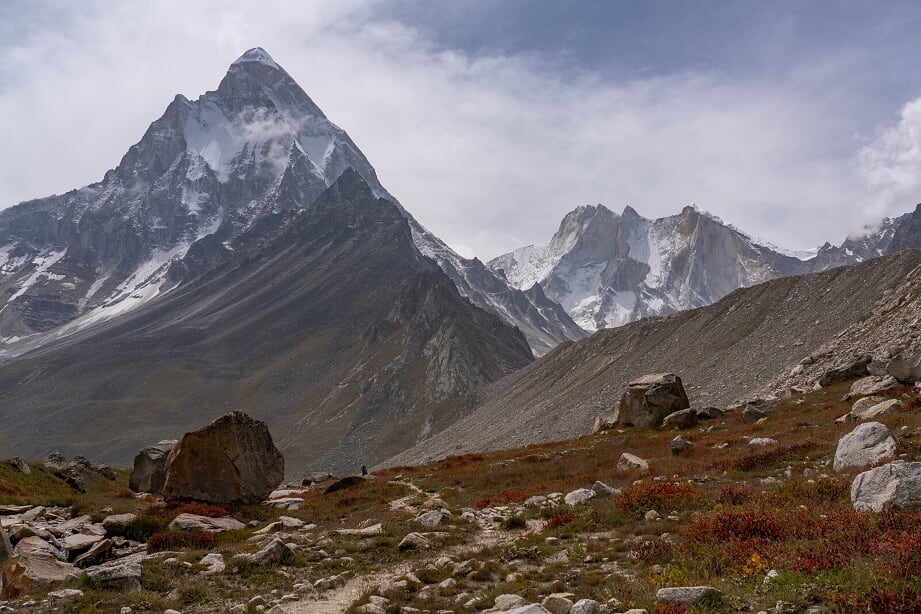
Location
Mount Shivling is located in the Indian Himalayas, in the Chamoli district of Uttarakhand state, India. It is situated in the Gangotri Group of peaks and is part of the larger Garhwal Range. The mountain is approximately 6,543 meters (21,467 feet) in height and is considered one of the more challenging peaks in the region.
Climbing History
Mount Shivling was first climbed in 1974 by a team of Indian mountaineers. Since then, it has become a popular destination for mountaineers and climbers, attracting both experienced and novice climbers. Despite its technical challenges, the mountain is considered relatively accessible compared to other peaks in the Himalayas. However, climbers should be well-prepared and equipped, as the climb involves steep terrain, glaciers, and exposed ridges. The climb to the summit typically takes several days and requires proper acclimatization to the high altitude.
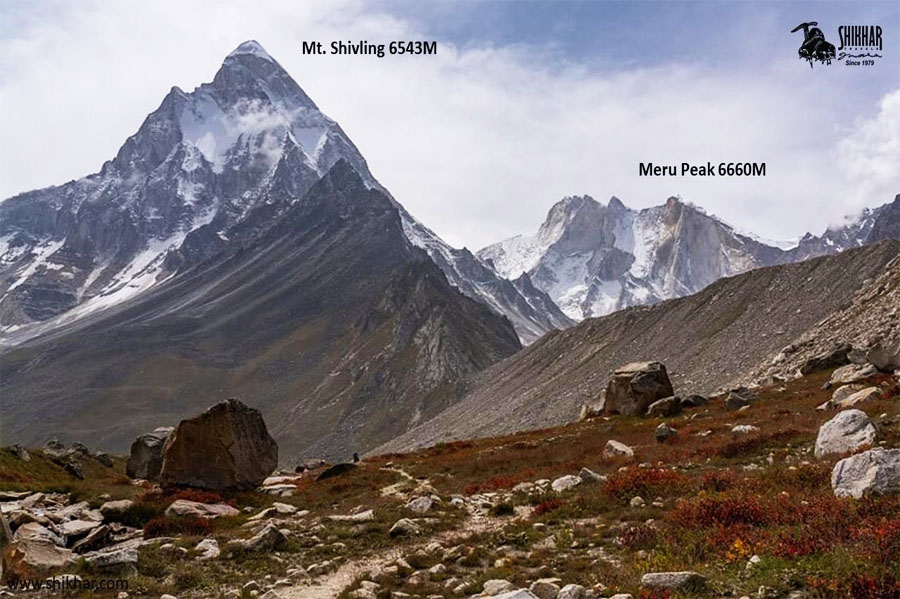
Best Time to Visit
The best time to visit Mount Shivling for climbing or trekking is from May to June and from September to October. During these months, the weather is relatively stable, and visibility is good, which makes it easier for climbers to reach the summit. However, it is important to keep in mind that mountain weather can be unpredictable and that conditions can change rapidly, even during the best months. It is always best to check the latest weather conditions and consult with local authorities before planning a trip to the mountain.
Weather
The weather on Mount Shivling can vary greatly depending on the time of year and altitude. In general, the lower slopes are relatively warm during the summer months, while the upper reaches of the mountain can be cold and inhospitable year-round. During the monsoon season, which typically lasts from July to September, the mountain is prone to heavy rainfall, making it difficult to climb. Winter months can be extremely cold, with heavy snowfall and strong winds, making it nearly impossible to climb. It is important to check the latest weather conditions before attempting to climb the mountain and to be prepared for rapidly changing conditions.
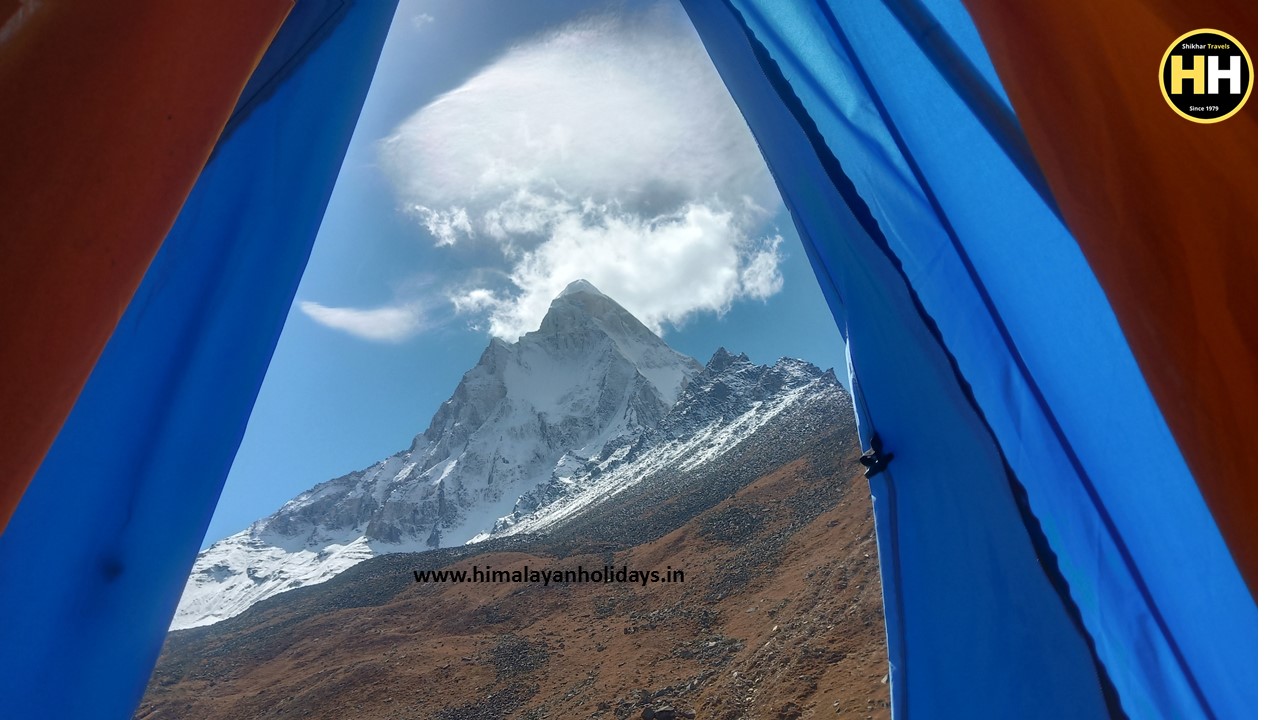
How to Reach
Mount Shivling can be reached by trekking in the Indian Himalayas. The trek starts from the town of Gangotri and takes about 5-6 days. It’s important to be physically fit and to have proper gear and equipment, as well as to obtain necessary permits and hire a local guide.
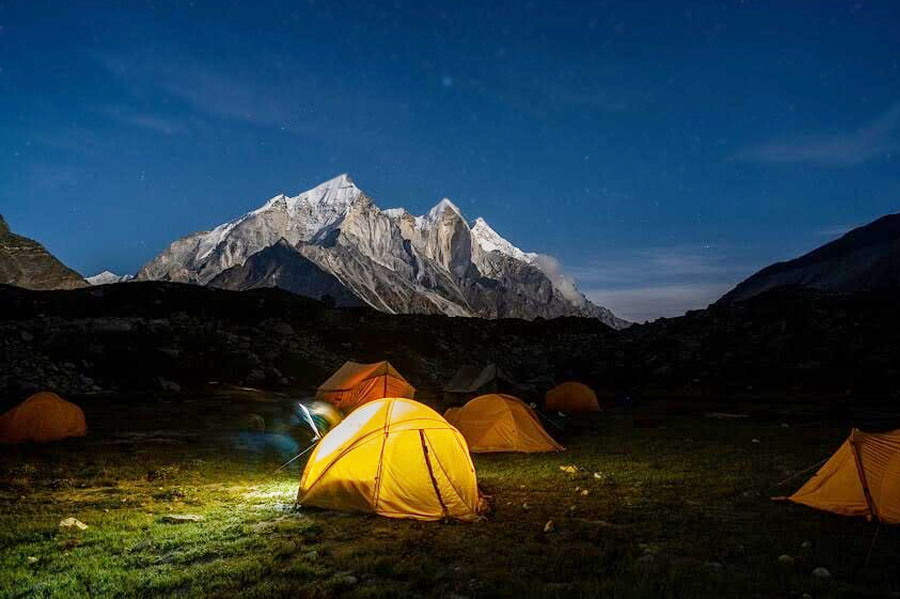
Route Map
The route map to reach Mount Shivling in the Indian Himalayas typically starts from the town of Gangotri and goes through the following places:
- Gangotri to Bhojbasa (14 km trek)
- Bhojbasa to Gaumukh (13 km trek)
- Gaumukh to Tapovan (12 km trek)
- Tapovan to Mount Shivling Base Camp (5 km trek)
- Base Camp to Summit of Mount Shivling (difficult ascent)
Note: This route is subject to change due to weather conditions and other factors, and it’s always advisable to consult with a local guide before starting the trek.
Things to Carry
- When trekking to Mount Shivling, it’s important to carry the following items:
- Warm clothing, including a jacket, gloves, and hat
- Hiking boots and trekking poles
- First-aid kit, including basic medications
- Hydration supplies, such as a water bottle and water purification tablets
- High-energy food, such as energy bars and dried fruits
- Sunscreen and sunglasses
- Torch or headlamp with extra batteries
- Portable charger or power bank
- Trash bags and a small shovel for packing out waste
- Permits and necessary documents, such as ID proof
Note: The list may vary depending on the individual and the specific trek, and it’s always best to consult with a local guide for more information on what to carry.

Food Guide
When trekking to Mount Shivling, it’s important to carry high-energy food and snacks to maintain your energy levels. Some recommended food items are:
- Energy bars
- Dried fruits and nuts
- Instant noodles and soups
- Cheese and crackers
- Chocolate and candy
It’s also advisable to carry water purification tablets or a water filter to ensure safe drinking water. At higher elevations, it may be difficult to find food and water, so it’s best to stock up when available.
Note: The availability of food on the trek may vary, and it’s always best to consult with a local guide for more information on what food is available.
Places to Visit during Mount Shivling Expedition
During a trek to Mount Shivling, you can visit the following places:
- Gangotri Temple: A Hindu temple dedicated to the goddess Ganga, located in the town of Gangotri.
- Gaumukh: The source of the Ganges River, located near the base of Mount Shivling.
- Tapovan: A meadow near the base of Mount Shivling, known for its scenic beauty.
- Bhagirathi Peaks: A group of peaks near the base of Mount Shivling, offering challenging climbing opportunities.
- Nandanvan: A meadow near the base of Mount Shivling, known for its views of the surrounding peaks.
Note: These are just a few of the places you may visit during a trek to Mount Shivling, and the specific places you visit may vary depending on the itinerary and weather conditions. It’s always best to consult with a local guide for more information on the available options.
Travel Tips
Here are some travel tips for a trek to Mount Shivling:
- Start early: Try to start your trek as early as possible to avoid crowds and to ensure you reach your destination before dark.
- Pack light: Only carry the essentials, as you will need to carry your own gear and supplies for the duration of the trek.
- Stay hydrated: Drink plenty of water, especially at high elevations where dehydration can occur quickly.
- Respect the environment: Practice Leave No Trace principles and do not litter or damage the natural environment.
- Hire a guide: Consider hiring a local guide to help with navigation, permits, and to provide information about the local culture and history.
- Be prepared for emergencies: Make sure you have a first-aid kit and know basic first-aid techniques, as well as carrying a portable charger or power bank.
- Acclimate to the altitude: Take your time to acclimate to the high altitude before pushing yourself too hard.
Note: These tips are general guidelines and may vary depending on the specific trek, so it’s always best to consult with a local guide for more information and advice.
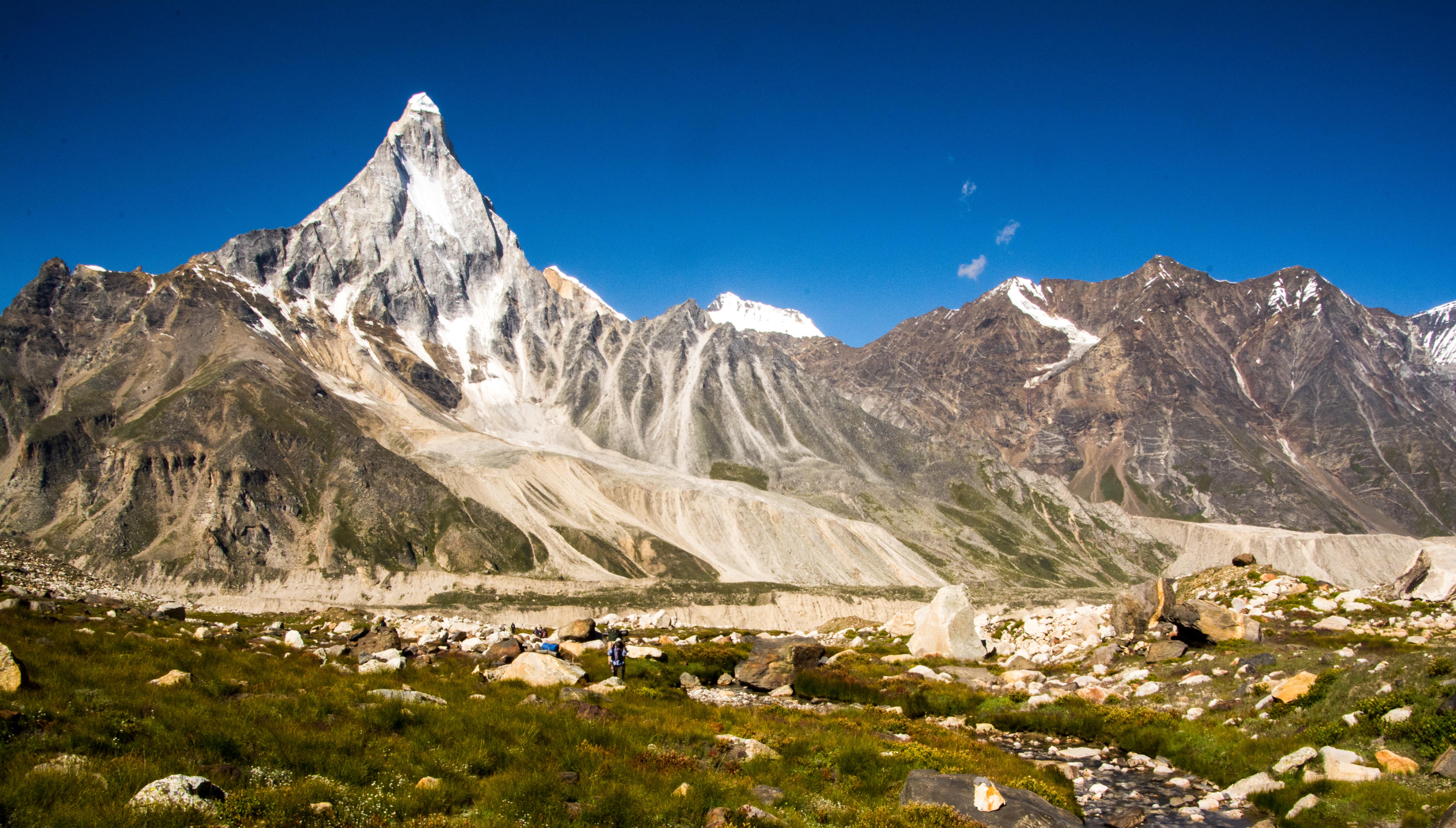
Mount Shivling – FAQ
Here are some common questions and answers about Mount Shivling:
1- What is Mount Shivling?
Mount Shivling is a peak in the Indian Himalayas, located near the source of the Ganges River. It is known for its scenic beauty and for being a challenging trek for experienced hikers and mountaineers.
2- How high is Mount Shivling?
Mount Shivling is approximately 6,543 meters (21,467 feet) in height.
3- When is the best time to trek to Mount Shivling?
The best time to trek to Mount Shivling is from May to June and from September to October, when the weather is clear and dry. Winter months can be very cold and snowy, making the trek difficult or impossible.
4- Is a permit required to trek to Mount Shivling?
Yes, a permit is required to trek to Mount Shivling, and it can be obtained from the district forest office in Uttarkashi.
5- Is it necessary to hire a guide to trek to Mount Shivling?
While it is not strictly necessary to hire a guide to trek to Mount Shivling, it is highly recommended for safety reasons, as well as for navigation and to ensure you have the necessary permits.
6- How difficult is the trek to Mount Shivling?
The trek to Mount Shivling is considered to be challenging, with steep inclines and high elevations. It is important to be in good physical condition and to have proper gear and equipment.
7- How long does the trek to Mount Shivling take?
The trek to Mount Shivling typically takes 5-6 days, but the specific time can vary depending on factors such as weather, route, and individual ability.